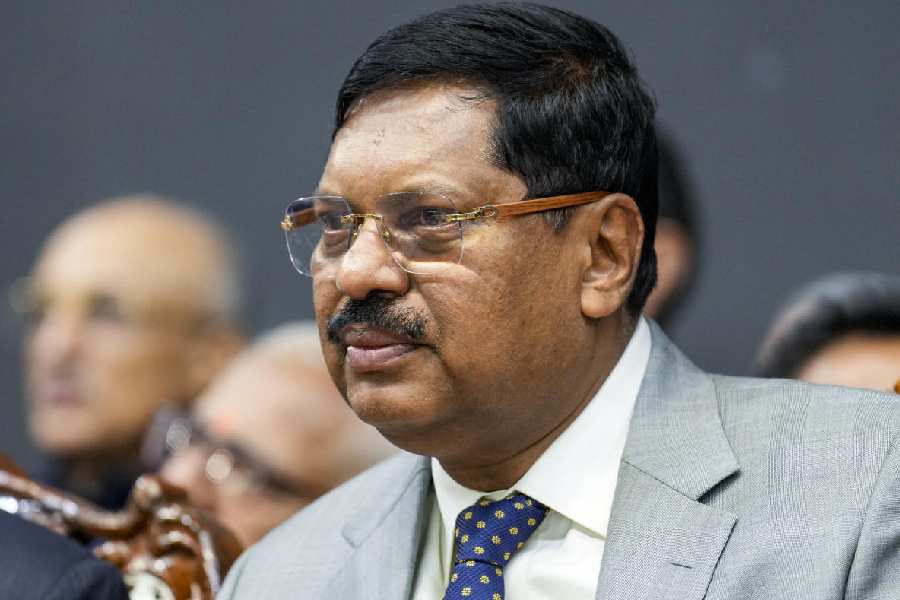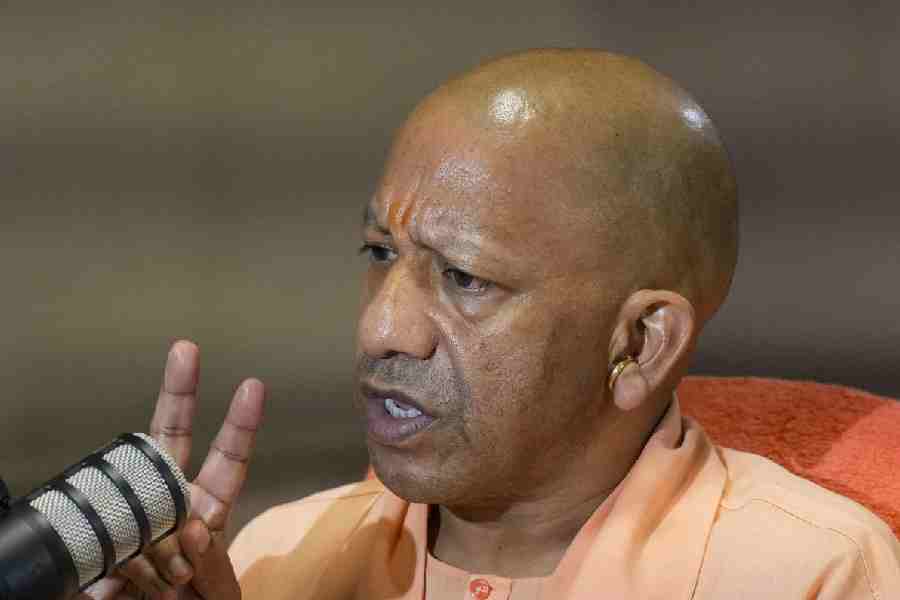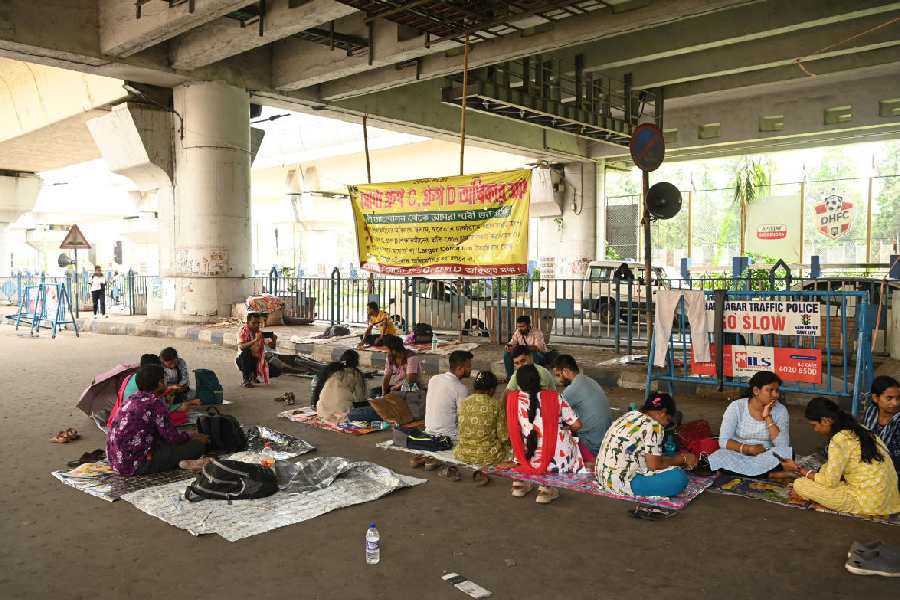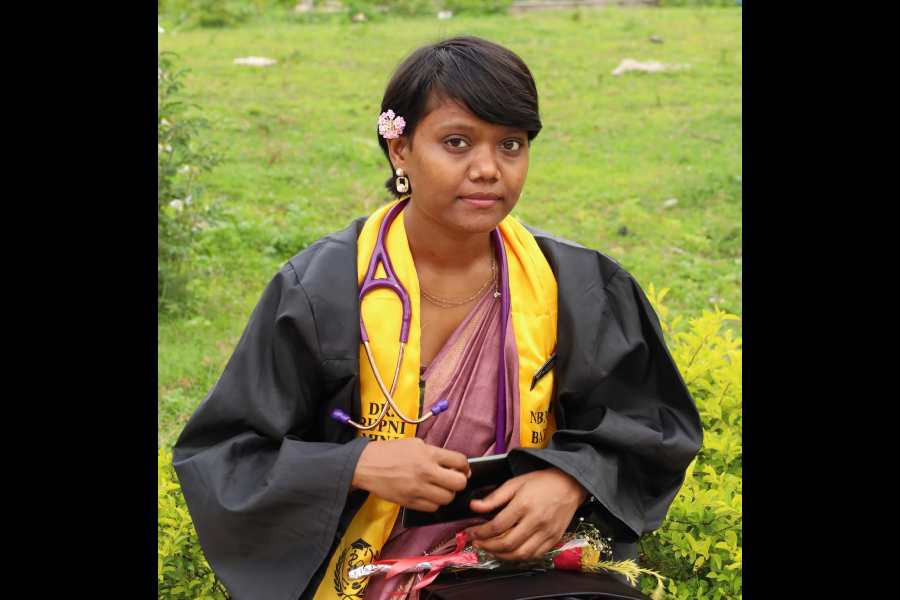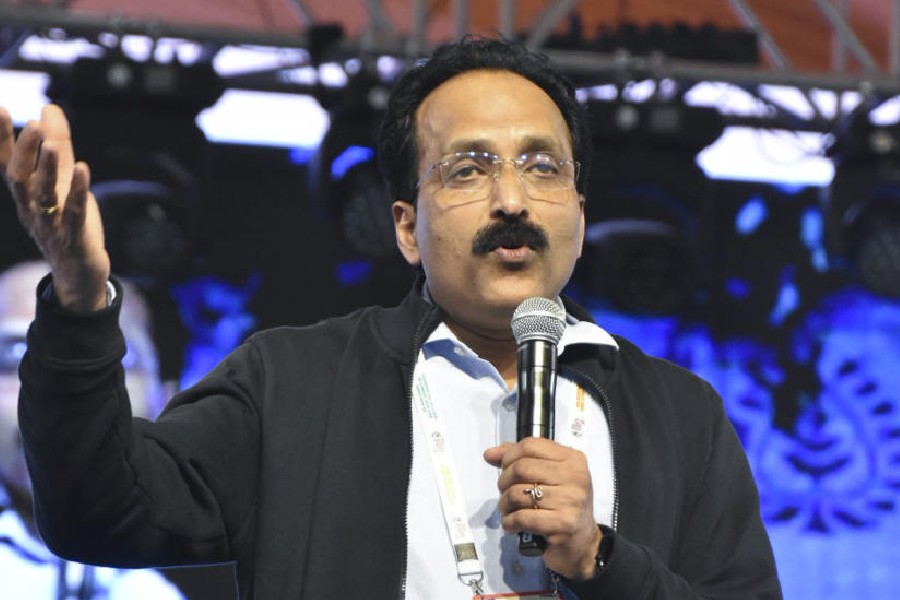 |
| Armed villagers carry wild boars hung on poles. Picture by Mita Roy |
 |
Purulia, May 8: A centuries-old hunting festival in Purulia’s Ayodhya Hills that had almost stopped over the past two years because of Maoist insurgency saw a turnout of 3,000 tribesmen this year.
Threats from the rebels had led the attendance at the Shikar Utsav, held every year on Buddha Purnima, to drop to a meagre 300 or so.
But this Sunday, thousands of tribesmen from Birbhum, Hooghly, Burdwan, East and West Midnapore, Murshidabad, Bankura and even Cooch Behar and Alipurduar divided themselves into teams of 20 to 25 members.
They started converging on the foothills from Saturday evening onwards, armed with traditional bows and arrows, pole axes, and even a few air rifles.
Several hunting teams also came from Jharkhand, Odisha and Bihar.
“We had been coming for the Shikar Utsav for the past 19 years,” recalled Sunil Mandi, who came along with 22 others from Kandra village in Jharkhand.
“We refrained from participating in the event for the last three years for fear of harassment and attacks by the Maoists who often threatened us to stay away from the festival,” Mandi said, as he set out for the hunt early on Sunday. The rebels have had a strong presence in the area since 2009.
The farmer from Jharkhand expressed happiness that the rebels had been pushed to back foot after the death of Kishan last year. “The situation has changed now. The Maoists are no longer there in the hills, and even if they are, they are no longer active,” he added.
The Maoists had chosen the hills as one of their hideouts because of the dense forests and its proximity to Jharkhand.
In December 2010, six Forward Bloc leaders and workers were shot dead by the rebels at Jhalda on the foothills of the Ayodhya Hills.
Also, in October 2010, the rebels abducted police inspector Partha Biswas and his schoolteacher friend Soumyajit Basu. Their bodies were found near the forests months later and identified through DNA tests.
The tribesmen are advised by forest officials not to hunt elephants, peacocks and other endangered animals, but only kill wild boars and rabbits.
Ajoy Das, the Purulia divisional forest officer, said his department made public announcements before the hunt and provided the villagers with a list of the animals that could be hunted.
The success of the festival this year is the result of several initiatives by police and administration, claimed police officers present in the hills during the hunt.
“Football matches, police jobs, free rice and BPL cards for people in Jungle Mahal have resulted in good ties between the locals and us,” said deputy superintendent of police (headquarters) Angshuman Saha.
“The people have started to have faith in the new government. Those who used to support the Maoists earlier have turned informers,” said Saha, who has a key role in containing insurgency in the Hill areas.
Shyamapada Majhi, a retired schoolteacher from Kashipur, explained the legend behind the ancient festival.
“The hunt is held during Buddha Purnima as Shiva, who followed Durga to earth after a fight in Kailash (heaven), located her at Para near the Ayodhya Hills.
“Even here, they had an argument and Shiva playfully attack her with a flute. Durga ran towards the forest and sat on a lion, her carrier. By this move, Shiva realised she had decided to return to Kailash and in happiness, started hunting. That day was Buddha Purnima,” Majhi said.
District magistrate Avanindra Singh said the turnout for the hunt was a good sign. “It means the people have overcome the fear of Maoists in the hills. We will now take measures to promote tourism in the Ayodhya hills,” he said.


